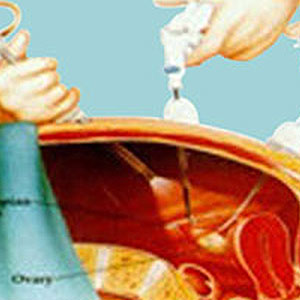
Concept
The laparoscopy is one of the minimally invasive surgical techniques. During laparoscopy, the surgeon makes one or more “key hole” an incision around surgical site through which laparoscope is placed so the surgeon does not need to perform laparotomy. Moreover, the surgeon can look directly at contents of a patient's abdomen or pelvis on a computer screen and perform accurate surgery. The process only lasts for a short time. This laparoscopy represents the epoch-making progress of conventional laparotomy.
The Advantages of Laparoscopy
Utilizing the laparoscopy inspection technique, the doctor can conduct inspection and treatment on patient’s womb and abdominal cavity at the same time. For example, when the doctor inspects something abnormal like endometrial polyp and fibroid, he can operate surgery for the patient, which saves both time and money. The specific advantages are as follow:
1. Accurate determination: The laparoscopy is a high-tech minimally invasive medical instrument and it can achieve the goal of accurate determination in the lesion within the womb.
2. No open procedures: Compared with the conventional laparotomy, the laparoscopy procedure requires no open procedures. Also, there are no wound and pain as well.
3. Uterus preservation: As for patients with tumors the diameter of more than 6cm, the laparoscopy can preserve their physiological function and patients’ mental state will not be affected whatsoever.
4. Quicker recovery times: Patient’s hospital stay lasts for 2 to 3 days. There is a few complications in the short term while no ovarian function affected in the long term.
5. Slight damage: Small incisions, whose size is 0.5cm; slight damage during the operation; short operation time, less bleeding and there will be no worm-like scar on the abdomen.
6.Less pain: Only 3 small incisions are made on the belly and abdomen; no incision of diseased organ so the healthy tissue won’t get harmed and there is less pain after surgery.
Indications
Radical cure for early gynecological cancer, such as cervical cancer, ovarian cancer, endometrial cancer, pelvic cancer, fibroid, ovarian cysts, adnexal cysts, chocolate cysts, vaginal cancer, uterine cancer, uterine sarcoma, fallopian tube tumors, cervical intraepithelial neoplasia (CIN), ovarian teratoma, hysteromyoma and so on.
As for the advanced gynecological cancer that loses the chance for surgery, the laparoscopy can solve many complications. A satisfactory therapeutic effect will be achieved when combining the laparoscopy with comprehensive techniques, such as traditional Chinese medicine, immune therapy and so on.



